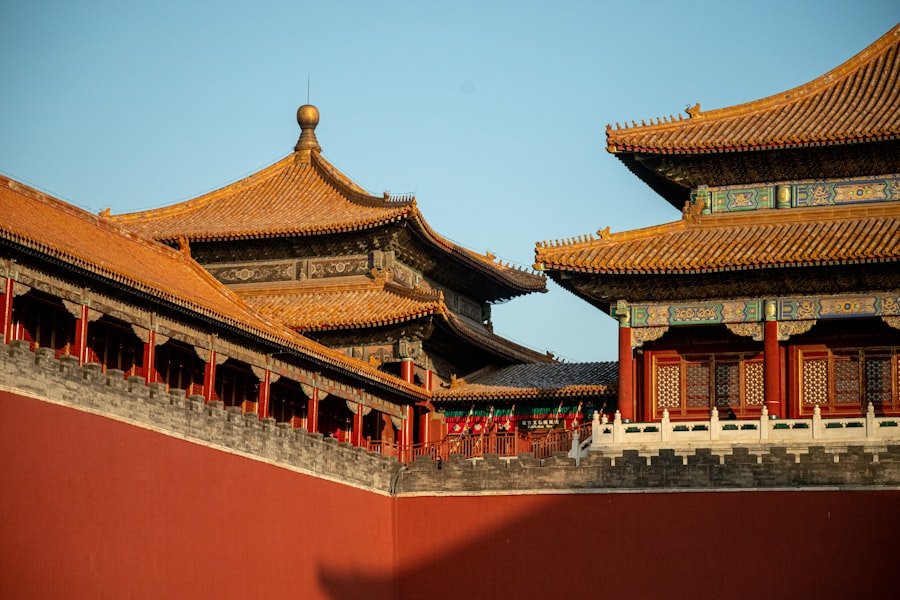Adjective reduplication is a fascinating linguistic phenomenon that plays a significant role in the Chinese language. This process involves the repetition of an adjective, often resulting in a nuanced meaning that enhances the expressiveness of the language. In Chinese, adjectives are not merely descriptive words; they can convey emotions, intensify meanings, and even alter the grammatical structure of sentences.
The study of adjective reduplication offers insights into the intricacies of Chinese grammar and its unique approach to conveying subtleties in meaning. The concept of reduplication is not exclusive to Chinese; it can be found in various languages around the world. However, the way it manifests in Chinese is particularly distinctive.
In this article, we will explore the structure, function, and semantic effects of adjective reduplication, as well as its presence in idioms and proverbs. We will also delve into its historical and cultural significance, its role in modern Chinese, and its phonological aspects. Finally, we will consider how adjective reduplication compares to similar phenomena in other languages, providing a comprehensive overview of this intriguing aspect of Chinese linguistics. Get to know more about our Chinese classes at the LC Chinese School in Oslo!
Table of Contents
ToggleSummary
- Adjective reduplication is a common linguistic phenomenon in Chinese language.
- The structure of adjective reduplication involves repeating the same adjective to intensify its meaning.
- Adjective reduplication serves various functions in Chinese grammar, including expressing emphasis, plurality, and degree.
- Examples of adjective reduplication can be found in everyday Chinese language, such as “高高兴兴” (gāo gāo xìng xìng) meaning “very happy”.
- Adjective reduplication in Chinese idioms and proverbs reflects the historical and cultural significance of the language.
The Structure of Adjective Reduplication
The structure of adjective reduplication in Chinese is relatively straightforward yet highly effective. Typically, the process involves repeating the base form of an adjective, which can be done in various ways depending on the context. For instance, a single-syllable adjective may be repeated entirely, while a two-syllable adjective might have only its first syllable duplicated.
This flexibility allows speakers to create a range of expressions that can convey different shades of meaning. In terms of syntax, adjective reduplication often occurs before a noun or within a descriptive phrase. For example, the adjective “高” (gāo), meaning “tall,” can be reduplicated to form “高高” (gāo gāo), which conveys a sense of being very tall or exceptionally high.
This structural simplicity belies the complexity of its implications, as the reduplicated form can evoke imagery and emotional resonance that a single adjective may not fully capture.
The Function of Adjective Reduplication in Chinese Grammar

Adjective reduplication serves several important functions within Chinese grammar. One primary function is to intensify the meaning of the adjective, allowing speakers to express heightened emotions or characteristics. For instance, when one says “快快” (kuài kuài), meaning “very fast,” it conveys a sense of urgency or excitement that “快” (kuài) alone may not fully express.
This intensification is particularly useful in everyday conversation, where emotional nuance plays a crucial role in communication. Another function of adjective reduplication is to create a more informal or colloquial tone. In casual speech, speakers often employ reduplication to convey familiarity or affection.
For example, “小小” (xiǎo xiǎo), meaning “small,” can imply endearment when referring to a child or pet. This informal usage reflects the dynamic nature of spoken Chinese and highlights how language evolves to accommodate social contexts and relationships.
Examples of Adjective Reduplication in Chinese
To illustrate the concept of adjective reduplication further, consider some common examples found in everyday language. The adjective “美” (měi), meaning “beautiful,” can be reduplicated to form “美美” (měi měi), which suggests an enhanced level of beauty or charm. This form is often used in contexts such as compliments or descriptions of aesthetically pleasing objects or people.
Another example is the adjective “热” (rè), meaning “hot.” When reduplicated as “热热” (rè rè), it can imply not just temperature but also an atmosphere filled with warmth and enthusiasm. Such expressions are prevalent in conversational contexts, where speakers aim to convey more than just the literal meaning of words. These examples highlight how adjective reduplication enriches the language and allows for greater expressiveness.
The Semantic Effect of Adjective Reduplication
The semantic effect of adjective reduplication extends beyond mere intensification; it also introduces layers of meaning that can alter the listener’s perception. When an adjective is reduplicated, it often evokes imagery or emotional responses that resonate with cultural connotations. For instance, “亮亮” (liàng liàng), meaning “bright,” not only suggests brightness but also connotes clarity and cheerfulness, creating a positive emotional atmosphere.
Moreover, the semantic effect can vary depending on context and usage. In some cases, reduplication may imply a sense of playfulness or light-heartedness, while in others, it may convey seriousness or urgency. This versatility makes adjective reduplication a powerful tool for speakers to navigate complex emotional landscapes and communicate nuanced ideas effectively.
Adjective Reduplication in Chinese Idioms and Proverbs

Adjective reduplication is also prevalent in Chinese idioms and proverbs, where it serves to enhance the richness of expression and convey traditional wisdom. Many idiomatic expressions incorporate reduplicated adjectives to create vivid imagery or reinforce moral lessons. For example, the idiom “好好学习” (hǎo hǎo xuéxí), meaning “study well,” uses reduplication to emphasise the importance of diligence and commitment to learning.
These idioms often reflect cultural values and societal norms, showcasing how language encapsulates collective wisdom over generations. The use of adjective reduplication within these expressions not only adds depth but also makes them more memorable and impactful for speakers and listeners alike.
The Historical and Cultural Significance of Adjective Reduplication
Historically, adjective reduplication has roots in ancient Chinese literature and poetry, where it was employed to create rhythm and enhance aesthetic appeal. Classical texts often utilised this linguistic feature to evoke emotions and paint vivid pictures through words. As such, adjective reduplication has become intertwined with cultural identity and artistic expression in Chinese literature.
Culturally, this phenomenon reflects the Chinese emphasis on harmony and balance in communication. The use of reduplicated adjectives aligns with traditional values that prioritise subtlety and nuance over directness. This cultural significance underscores how language evolves alongside societal norms and historical contexts, making adjective reduplication a vital aspect of understanding Chinese heritage.
Adjective Reduplication in Modern Chinese Language
In contemporary Chinese language usage, adjective reduplication continues to thrive, particularly in informal settings such as social media and everyday conversation. The rise of digital communication has further popularised this linguistic feature as speakers seek to convey emotions quickly and effectively through concise expressions. As a result, new forms of reduplicated adjectives have emerged, reflecting changing trends and cultural influences.
Moreover, the influence of globalisation has introduced new vocabulary into the Chinese lexicon, leading to innovative uses of adjective reduplication that blend traditional elements with modern sensibilities. This evolution demonstrates the adaptability of the Chinese language and its capacity to incorporate new ideas while retaining its unique characteristics.
The Phonological and Prosodic Aspects of Adjective Reduplication
Phonologically, adjective reduplication in Chinese exhibits distinct patterns that contribute to its rhythmic quality. The repetition of sounds creates a musicality that enhances the overall flow of speech. This prosodic aspect is particularly important in spoken language, where intonation and rhythm play crucial roles in conveying meaning and emotion.
The phonological structure also influences how listeners perceive reduplicated adjectives. The repetition can create emphasis or highlight specific qualities associated with the adjective, making it more memorable for the audience. This interplay between sound and meaning underscores the complexity of language as a tool for communication.
Adjective Reduplication in Comparative Linguistics
When examining adjective reduplication from a comparative linguistics perspective, it becomes evident that while many languages employ similar processes, the specific functions and structures can vary significantly. In some languages, for instance, reduplication may serve primarily as a grammatical marker rather than an expressive tool as seen in Chinese. This comparative analysis reveals insights into how different cultures approach language and communication.
By studying adjective reduplication across languages, linguists can better understand the cognitive processes involved in language acquisition and usage, as well as the cultural values embedded within linguistic structures.
Conclusion and Implications of Adjective Reduplication in Chinese Language
In conclusion, adjective reduplication is a multifaceted phenomenon that enriches the Chinese language by enhancing expressiveness and conveying nuanced meanings. Its structural simplicity belies its profound impact on communication, allowing speakers to navigate complex emotional landscapes with ease. From its historical roots to its modern applications, adjective reduplication reflects cultural values and societal norms that shape language use.
As we continue to explore the intricacies of Chinese linguistics, it becomes clear that understanding features like adjective reduplication is essential for grasping the richness of the language. For those interested in mastering Chinese or deepening their appreciation for its complexities, courses at institutions like LC Chinese School in Oslo offer invaluable opportunities to engage with these linguistic phenomena firsthand. By immersing oneself in such courses, learners can gain insights into not only grammar but also the cultural significance embedded within the language—an experience that transcends mere vocabulary acquisition and fosters a deeper connection with Chinese heritage.
Get to know more about our Chinese classes at the LC Chinese School in Oslo!







